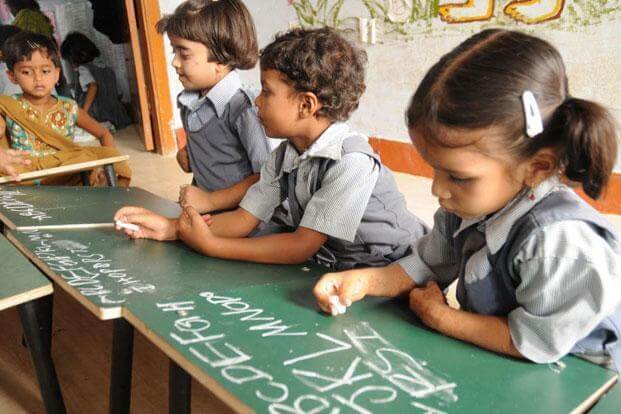SN Misra & Sanjaya Kumar Ghadai
The non-governmental organisation Pratham has been producing the Annual Status of Education Report (ASER) each year. ASER-2018 covered 596 rural districts with 17,730 villages, 3.54 lakh households and 5.46 lakh children in the age group 3-16. Based on findings from random sampling, it is seen that educational outcomes are not significantly different from earlier reports. The report laments that there is hardly any improvement in reading and numeracy capability of students in various grades. A drop of 9 per cent — from 38.8 per cent to 28.1 per cent now — has been noted in the ability of students to read in Std-V level. Similar deterioration — from 34 per cent to 23 per cent — has also been noticed in the ability of students to divide (3 digit / 1 digit). ASER notes that wide disparities exist in the reading level even in the same grade (std-III). For instance, in Himachal Pradesh while only 2.4 per cent children could not recognise letters in the alphabet, in Uttar Pradesh it is as high as 24.5 per cent in Uttar Pradesh. In Odisha, the figure is about 3 per cent.
However, gender gap has shrunk from 7.2 per cent in 2008 to 4.1 per cent now, which is welcome.
A redeeming turnaround has been a reduction in the percentage of girls dropping out of school after the age of 11. From 10.3 per cent in 2008, it has now come down to 4.1 per cent
The report does not dwell on learning ability in English, which was abysmally low (32 per cent) for Std-III. Private schools fared much better. However, the effectiveness of private schools in other areas came down from 68 per cent in 2008 to 65 per cent in 2018. The percentage of children opting for private schools has remained stagnant about 30 per cent since 2014. These findings also show that students in both government schools and private schools are handicapped in numeracy and reading ability.
Huge variation in attendance was noticed in schools. While it was about 85 per cent in states such as Kerala, Gujarat, Maharashtra and Tamil Nadu, Odisha fared reasonably well with 82-84 per cent. States such as Uttar Pradesh, Bihar, West Bengal and Madhya Pradesh languish with attendance of 60 per cent or less.
A redeeming turnaround has been a reduction in the percentage of girls dropping out of school after the age of 11. From 10.3 per cent in 2008, it has now come down to 4.1 per cent. Odisha has shown remarkable improvement with only 2.1 per cent girls past 11 years of age dropping out. There is also significant improvement in the availability of usable toilets for girls. It has gone up from 32.9 per cent to 66.4 per cent. But availability of computers has grown slowly from 15.8 per cent to only 21 per cent. Kerala and Gujarat are exceptions with 75 per cent and 67 per cent respectively.
In the discussion on primary education, a vital omission in our public policy is the lack of importance given to pre-school informal education (3-6 years) and nutritional requirements of a child. Extensive international research in neurosciences, psychology and economics shows that early childhood (0-8 years) is the most critical period during which foundation for lifelong learning is laid.
Ninety per cent of all brain development happens by the age of 6. While the ICDS scheme, as a flagship programme seeks to provide additional protein supplements to children in anganwadi centres, Rapid Survey of Children (2012) revealed that close to 42 per cent of children were malnourished. The position is even worse in the case of girls, of whom 30 per cent are severely anaemic. A national policy on pre-schooling non-formal education is yet to see the light of day. In the absence of proper nutritional intake and learning opportunities for children between 3 and 6 years of age government schools hardly provide an ideal platform for children to improve his or her learning, cognitive and numeracy skills.
It is imperative to increase the allocation to education sector significantly. Nobel laureates such as Amartya Sen have been saying that allocation to primary education must be increased to at least 6 per cent from the present 3 per cent. While Sarva Shiksha Abhiyan has provided access to all children, the resources have thinned in terms of facilities, qualities and the enabling learning environment in the absence of significant increase in scope but no increase in allocation. Abdul Latif Jameel of Poverty Action Lab has shown how teaching at the right level of intervention can be most cost-effective learning procedure for primary education. He shows how pen and paper assessment does not make sense for most children in Class-III. Understanding their current level of reading or arithmetic will need methods such as working with them on a one-to-one basis with oral interactive tasks.
Available data show that India is close to achieving schooling for all. Now is the time to make ‘learning for all’ a national priority and ensuring that every child has the opportunity to acquire foundational skills in primary schools and the right kind of nutrition and joyful informal learning between the ages of 3 and 6.
Nobel laureate Robert Solow (1959) had brought out how factor productivity is key to growth of any country. The phenomenal growth of the US has been contributed 80 per cent by such improvement in human factor productivity which was possible due to quality education, research and innovation. In India, factor productivity contributes as low as 30 per cent. Quality learning at primary level will catapult India into the comity of developed countries. As India awaits the interim budget, every child will look forward to quality learning in a joyful milieu.
SN Misra teaches economics; e-Mail: misra.sn54@gmail.com. Sanjay Kumar Ghadai is a research scholar; e-Mail: ghadaisk77@gmail.com.
